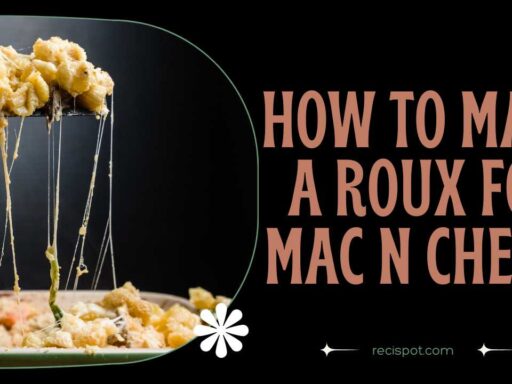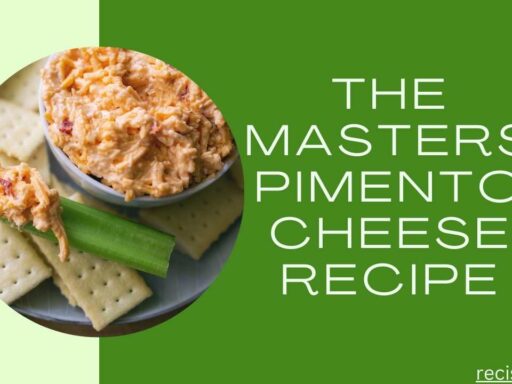Indulge in mouthwatering Cotija cheese recipes on our site. Elevate your culinary skills with our collection of savory dishes featuring this popular Mexican cheese.
Cotija cheese, a slightly salty and crumbly cheese with a rich history in Mexican cuisine, offers a distinct flavor that adds a zesty touch to various dishes. With its growing popularity, home cooks and cheese enthusiasts are keen to learn how to prepare and use this delicious cheese. Whether you’re a fan of Mexican dishes or simply enjoy exploring new flavors, this guide will walk you through the process of making your cotija cheese recipes and incorporating them into an array of tempting cooking recipes.
What are Cotija cheese recipes?
Cotija cheese, also known as Queso Anejo or Añejo, is a hard cow’s milk cheese that originated in the town of Cotija in Michoacán, Mexico. It has been a staple in Mexican cuisine for centuries and is often referred to as “the parmesan of Mexico.”
Making Cotija Cheese at Home
Making cotija cheese recipes requires patience and a bit of skill, but it’s a rewarding process for those who enjoy hands-on cooking experiences. To start, you’ll need a few basic ingredients: high-quality pasteurized cow’s milk, a cheese culture specific to hard cheeses, rennet to coagulate the milk, and salt. The process involves heating the milk, adding the culture and rennet to create curds, and then pressing and aging the cheese until it achieves its characteristic firmness and flavor profile.
The aging process is crucial, as it allows cotija cheese recipes to develop their unique salty and milky taste, which can take anywhere from three months to several years. While it may seem daunting at first, with practice and the right tools, making cotija cheese recipes at home can become a regular part of your culinary repertoire.
Credit: www.pexels.com
Incorporating Cotija Cheese into Delicious Recipes
Once you’ve made your cotija cheese recipes, it’s time to put it to use in various recipes. Here are some ideas for incorporating this flavorful cheese into your cooking:
- Sprinkle crumbled cotija cheese recipes over Mexican-inspired dishes like enchiladas, tacos, or tostadas for a tangy and salty kick.
- Use grated ccotija cheese recipes instead of parmesan in pasta dishes for a unique twist on classic flavors.
- Mix diced cotija cheese recipes into omelets or frittatas for added texture and flavor.
- Create a creamy cotija cheese dressing for salads by blending the cheese with herbs, lime juice, and olive oil.
- Top off grilled corn on the cob with crumbled cotija cheese recipes and chili powder for a traditional Mexican street food experience.
- Add grated cotija cheese recipes to soups or stews as a finishing touch before serving for added richness and flavor.
Tips for Storing Cotija Cheese
To keep your cotija cheese recipes fresh and flavorful, it’s important to store it properly. Here are a few tips:
- Keep cotija cheese refrigerated in an airtight container or wrapped tightly in plastic wrap.
- If the cheese starts to dry out, you can rehydrate it by soaking it in milk for a few hours before using it.
- Freshly made cotija cheese recipes can last in the refrigerator for up to two weeks, while aged cotija cheese can last for several months.
Additional Tips for Using Cotija Cheese
Here are a few more tips for using cotija cheese recipes in your cooking:
- Experiment with different herbs and spices to create unique flavor combinations when making cotija cheese recipes at home.
- Don’t be afraid to use cotija cheese recipes in non-Mexican dishes, such as on top of roasted vegetables or mixed into a quinoa salad for added protein and flavor.
- For those who are lactose intolerant, cotija cheese recipes is a great alternative to other cheeses as it has a lower lactose content.
- If you can’t find cotija cheese recipes at your local grocery store, try looking for it at a specialty cheese shop or online.
Acquainting with Cotija Cheese
Before we churn through recipes and cheese-making techniques, it’s crucial to understand the key players in these culinary adventures. Cotija is a hard cow’s milk cheese named after the town of Cotija in Mexico. With a strong salty flavor due to its aging process, it’s often described as Parmesan-like, though much drier and harder. Cotija comes in two varieties: an aged version (Cotija Añejo) and a fresh, softer version (Cotija Fresco). Añejo is crumbled over finished food as a table cheese, while Fresco is more versatile and suitable for snacking, cooking, and melting.
Ingredients You’ll Need
To start your cotija cheese recipes journey, you’ll need the following ingredients:
For Making Cotija Cheese at Home:
- 1 gallon of whole milk
- 1/3 cup of buttermilk
- Cheese salt (or kosher salt, as a substitute)
- Cheesecloth
For Recipes:
- Fresh corn on the cob
- Poblano or bell peppers
- Mayonnaise or sour cream
- Paprika or chili powder
- Limes
- Tomatoes
- Onions
- Cilantro
- Ground beef or turkey (optional)
- Salsa
- Corn or flour tortillas
- Your choice of protein (chicken, beef, fish)
- Cabbage or lettuce
- Crema
- Black beans or quinoa (for the peppers recipe, as a vegetarian option)
Now, with our ingredients in hand and our aprons on, it’s time to get cooking.
Step-by-Step Guide to Making Cotija Cheese at Home
Making cotija cheese at home is a rewarding experience that allows you to control the texture and level of saltiness. Here’s how you can do it:
Step 1: Preparing the Milk
Pour the whole milk into a large, heavy-bottomed pot and heat it over medium heat. Stir the milk occasionally and use a thermometer to monitor the temperature. You’re aiming for it to reach 190°F—this is the optimal temperature to start the curdling process.
Step 2: Adding the Buttermilk
Once the milk is at the right temperature, add the buttermilk and stir gently to combine. Continue heating the milk mixture, keeping it within the 190-195°F range. Curds should start to form, which will take around 10-20 minutes. Be patient; don’t rush this process, as it’s crucial for the cheese to set properly.
Step 3: Draining and Shaping
Prepare a large bowl and a strainer lined with cheesecloth. When the curds have been set, gently pour them into the strainer to separate them from the whey. Once you’ve done this, gather the ends of the cheesecloth and tie them together. Hang the bundle in a cool, dry place to drain for 6-12 hours or until the cheese reaches your desired consistency.
Step 4: Salting the Cheese
Once the cheese has drained, remove it from the cheesecloth and place it in a bowl. Add cheese salt or kosher salt to taste and mix well. Remember, you can always add more salt later, so start with a small amount and taste as you go.
Step 5: Storage
Crumble the cheese if you prefer, then transfer it to an airtight container and store it in the fridge. Homemade cotija cheese will be kept for a few weeks.
Now that you have your homemade cotija cheese ready, here are three delicious recipes to put it to use.
Cotija Cheese Recipes
Classic Corn on the Cob with Cotija
Ingredients:
- Fresh corn on the cob
- Mayonnaise or sour cream
- Cotija cheese
- Paprika or chili powder
- Limes
Instructions:
- Start by grilling or boiling the corn until it is fully cooked and still crunchy.
- Spread mayonnaise or sour cream over the corn to create a creamy base.
- Sprinkle the crumbled cotija cheese generously over the corn, and then dust it with paprika or chili powder for an extra layer of flavor.
- Serve immediately, optionally, with lime wedges.
Tip: For a party or barbecue, cut the corn into manageable portions and provide wooden skewers for easy handling.
Cotija-Stuffed Peppers
Ingredients:
- Poblano or bell peppers
- Cotija cheese
- Diced tomatoes
- Onions
- Cilantro
- Optional: Ground beef or turkey
- Salsa
Instructions:
- Slice the peppers lengthwise, creating a pocket, and remove the seeds and membrane.
- Combine crumbled cotija cheese with diced tomatoes, onions, and cilantro. If using, add cooked ground beef or turkey.
- Stuff the pepper halves with the mixture.
- Bake until the peppers are tender, and the cheese is golden brown.
- Serve hot, optionally, with a drizzle of salsa or sour cream.
Tip: Weave in a spatula around the sides of the cheese to keep it moist while baking.
Cotija Cheese Tacos
Ingredients:
- Your choice of protein (chicken, beef, or fish)
- Salsa
- Corn or flour tortillas
- Chopped cabbage or lettuce
- Crema
- Cotija cheese
Instructions:
- Cook the protein with your preferred seasoning until fully cooked.
- Warm the tortillas on a skillet or in the oven.
- Assemble the tacos by layering the cooked protein, cabbage or lettuce, salsa, and a generous sprinkle of cotija cheese.
- Optional: drizzle with crema or a squeeze of lime
- Serve immediately with additional salsa and lime wedges.
Tip: Cotija cheese is best added just before serving to maintain its distinct texture and flavor.
Serving Suggestions
cotija cheese recipes aren’t just for tacos and corn. Here are a few more ways to include it in your culinary adventures:
- Sprinkle it over the nachos for a tangy twist.
- Crumble it onto your salads for a flavorful, protein-packed punch.
- Use it to top off soups and stews, adding an authentic touch to your Mexican-inspired dishes.
- Incorporate it into your homemade salsas for extra depth.
By mastering these recipes and techniques, you’ll be well on your way to elevating your cooking with the delightful flavors of cotija cheese. To explore even more ways to enjoy this Mexican favorite, consider it as a topping for various dishes or experiment with it as a starring ingredient in your unique creations.
With each step along this cotija cheese recipes adventure, you’ll be bringing the authentic taste of Mexico straight to your kitchen. Your friends and family will be impressed, and your taste buds will be grateful for the new, scrumptious experiences. Go ahead, get cheesy with Cotija—it’s an adventure worth taking!
FAQs on Making and Using Cotija Cheese
Can I use skim milk to make cotija cheese?
It’s best to use whole milk to make cotija cheese. Skim milk lacks the fat content necessary for the cheese to develop its characteristic texture and flavor.
How long can homemade cotija cheese be stored?
Homemade cotija cheese recipes can be stored in an airtight container in the refrigerator for up to 2-3 weeks. Ensure it’s well drained and salted to preserve it for longer.
Is there a substitute for buttermilk in the cheese-making process?
If buttermilk is not available, you can use a mixture of milk and lemon juice or vinegar as a substitute. This mixture will help in the curdling process, similar to buttermilk.
Can I freeze cotija cheese?
Yes, cotija cheese recipes can be frozen, though it may slightly alter its texture. Freeze it in an airtight container or a tightly sealed plastic bag. It’s best used within a few months.
How can I adjust the saltiness of my cotija cheese?
The saltiness can be adjusted by the amount of salt added during the salting step. Start with a little and increase according to taste. Remember, it’s easier to add more salt later than to fix an overly salty cheese.
What are some alternative uses for the whey left over from the cheese-making process?
The leftover whey is nutritious and can be used in various ways. It can be used in baking, as a base for soups and stews, or for fermenting vegetables. It’s also great for watering plants as it contains valuable nutrients.
These FAQs should guide home cooks through the process of making and using cotija cheese, ensuring delicious outcomes in every dish.
Final Thoughts Cotija cheese recipes
From its rich history to its unique flavor profile, Cotija cheese recipes are a versatile and delicious addition to any kitchen. Whether you make it yourself or purchase it from a specialty store, this guide has hopefully given you a better understanding of what cotija cheese is and how to use it in your cooking. So next time you’re looking to add some zing to your dishes, reach for some cotija cheese and get creative with your recipes! Happy cooking!






